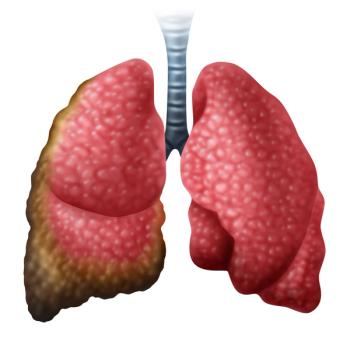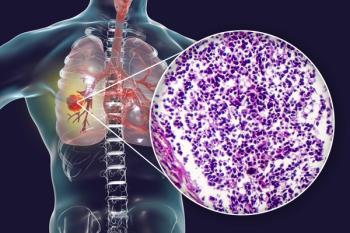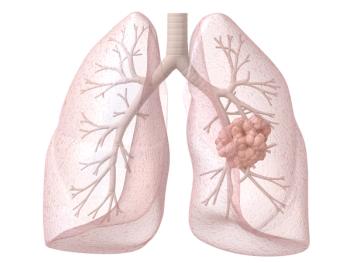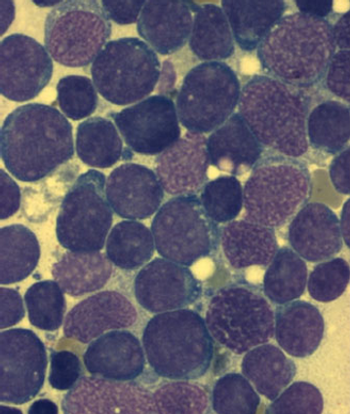
Sessions of interest at the 2025 Gastrointestinal Cancers Symposium will include data on colorectal cancer, pancreatic ductal adenocarcinoma, and more.

Your AI-Trained Oncology Knowledge Connection!


Sessions of interest at the 2025 Gastrointestinal Cancers Symposium will include data on colorectal cancer, pancreatic ductal adenocarcinoma, and more.

RP1 with nivolumab elicited an ORR of 38.7% with an acceptable safety profile in patients with advanced melanoma who progressed on anti–PD-1 therapy.

Results from a Chinese phase 1 trial reveal that anlotinib plus EGFR-TKIs demonstrated manageable toxicity in NSCLC pre-treated with EGFR-TKIs.

Tycel Phillips, MD, questioned how the regimen of acalabrutinib, bendamustine, and rituximab would compare with taking the drugs separately in mantle cell lymphoma.

Standardizing surgical outcomes and better training oncologic surgeons may be accomplished through the use of AI.

The approval marks Foundation Medicine’s first companion diagnostic indication to exclusively support pediatric patients with brain tumors.

Dostarlimab/chemotherapy elicited a 31% decrease in the risk of death compared with placebo/chemotherapy in locally advanced/recurrent endometrial cancer.

Micheal P. Bogenschutz, MD, discussed addressing unmet needs, implementation, and adverse effects related to psilocybin-assisted psychotherapy in cancer.

Michael P. Bogenschutz, MD, discusses the efficacy, safety, implementation, and future research of psilocybin for cancer-related psychological events.

The poly-ICLC trial seeks to develop a delivery mechanism to prostate cancer through different biomarkers.

Progression-free survival and objective response rate outcomes favored the tisotumab vedotin arm in the China subpopulation of the innovaTV 301 study.

The DCISionRT test has shown to be a significant factor in a clinician’s recommendation on whether a patient with DCIS should receive radiotherapy.

UGN-102 elicited complete responses in 79.6% of patients with non–muscle-invasive bladder cancer at 3 months in the ENVISION trial.

A panel of experts met to discuss the best treatment options for patients with EGFR or TP53-mutated non–small cell lung cancer.

As part of a Satellite Sessions program focused on the Cleveland Clinic and surrounding institutions, CancerNetwork hosted a panel discussion on treatment options for patients with EGFR-mutated NSCLC.

The discussion on NSCLC narrowed in on findings from recent clinical trials, particularly involving a combination regimen of amivantamab plus lazertinib vs osimertinib and chemotherapy.

Referring to the NCCN guidelines for the treatment of EGFR-mutated NSCLC will help clinicians determine which treatments are best recommended.

The combination of amivantamab plus lazertinib has emerged as a potential treatment option for patients with EGFR-mutated NSCLC and has shown sufficient efficacy responses.

Shwetal Mehta, PhD, highlights early phase clinical trials, biomarker testing strategies, and potential next steps for research in the brain cancer field.

Interim analysis data show improvements in overall survival with OST-HER2 in this osteosarcoma population compared with historical controls.

Data from the TROPION-Breast01 trial support the FDA approval of datopotamab deruxtecan for those with metastatic HR–positive, HER2-negative breast cancer.

“Some of the early data that came out of the [ECHO] trial that led to this approval does suggest that it may be beneficial in some high-risk patients,” Tycel Phillips, MD, said.

The CRL did not identify any deficiencies related to the manufacturing, efficacy, or safety outlined in the BLA, and no new clinical trials were requested.

Phase 3 EMERALD-1 trial results reveal that no new adverse events were identified with durvalumab plus bevacizumab in patients with unresectable HCC.

Brentuximab vedotin, lenalidomide, and rituximab yielded a median OS of 13.8 months and a median PFS of 4.2 months in the phase 3 ECHELON-3 trial.

Results from the CodeBreaK 300 trial helped lead to the approval of sotorasib/panitumumab in KRAS G12C-mutated CRC.

The FDA has approved acalabrutinib in previously untreated MCL based on results from the phase 3 ECHO trial.

Shwetal Mehta, PhD, describes efforts regarding the development of protein degraders and antibody-drug conjugates in the neuro-oncology field.

Additionally, the Chinese Society of Clinical Oncology and Chinese Anti-Cancer Association guidelines recommend the isatuximab regimen for this population.

The developers expect the product to be available for order in the United States in early February 2025.